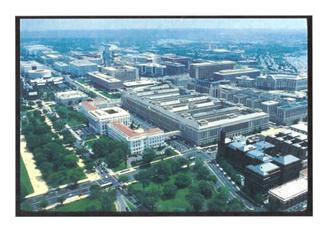TENNESSEE RIVER PEARLS ON DISPLAY IN WASHINGTON
Tennessee was the featured state during the months of April and May of 2004 at the USDA Headquarters Complex in Washington DC. Tennessee Agricultural Services gathered items of interest depicting agri-tourism and created the display. The Tennessee River Freshwater Pearl Farm, Museum, and Tour Manufacturer – the only current item listed in Tennessee’s agri-tourism that is not a consumable (i.e.: produce, etc) making it quite a unique entity. The official site of pearl cultivation, and growing the states official gemstone, the Tennessee River Pearl, held a large percentage of the exhibit.
The exhibit is now on display in the Agricultural Services offices in Nashville, TN showing how unique and diverse our state is in agriculture.
 HISTORY OF THE USDA HEADQUARTERS COMPLEX SOUTH BUILDING
HISTORY OF THE USDA HEADQUARTERS COMPLEX SOUTH BUILDING
Originally, named the "Extensible Building," the South Building received design and construction funding in 1926 the same year funding was appropriated for the Administration Building (central portion of the Whitten.) The South Building was designed to house offices and laboratories. Compared to the grand ceremonial spaces of the Whitten Building, the South Building is utilitarian in nature. The design is attributed to the Treasury Department" s Office of the Supervising Architect
Because of difficulties in land acquisition, the building was conceived from the start as a phased development: how appropriate that modernization progresses in phases today. Notice to proceed with the first phase of construction was given in 1930, which saw the rise of wings four and five and the connecting segments. The connecting segments came to be Imown as the Headhouse (Independence A venue) and the Tailhouse (C Street) respectively. The scope of the second phase, which included everything west of wing five and much of what is east of wing four, began in 1932 with completion in 1935. Concluding in 1936, the last portion of construction featured two connecting pedestrian bridges, which link the South Building to the Whitten Building. The cafeteria, popular with tourists, was added circa 1970. The metro stop on the corner of Independence Avenue and 12 Street opened in the late seventies and practical1y brings pedestrian traffic into the building.
The stripped classic style is ornamented with variegated brick, limestone, and terra cotta details in unique combination. The building is distinguished too by its size, said to be the largest office building in the world, until the construction of the Pentagon in 1942.